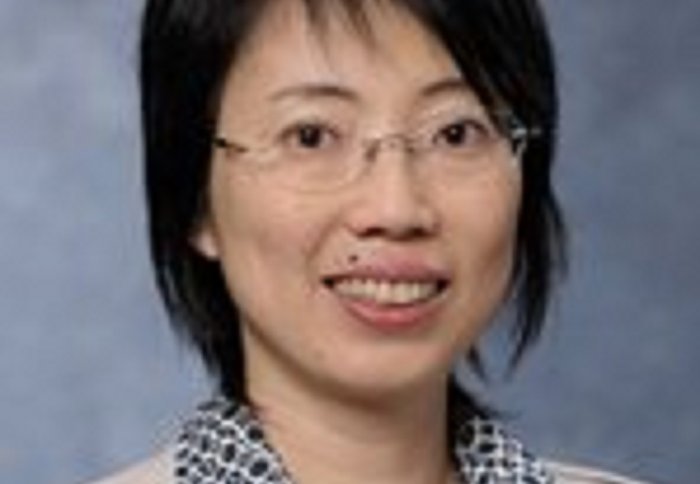
Xinyan Tracy Cui

Bioengineering Strategies Towards a Seamless and Stable Neural Tissue-Electrode Interface
Centre for Neurotechnology seminar, Monday 8th December, 1pm
Bioengineering Strategies Towards a Seamless and Stable Neural Tissue-Electrode Interface
XINYAN TRACY CUI, University of Pittsburgh
2.28, Royal School of Mines Building, South Kensington Campus
Abstract
Micro-fabricated neural electrode arrays, placed in the nervous system to directly interface with neurons, have tremendous research and clinical significance. Current arrays experience chronic failure including signal drift and degradation due to biochemical, mechanical and electrical mismatch between the artificial device and brain tissue. Several bioengineering strategies are being investigated towards a seamless and stable neural electrode-tissue interface. The first strategy is to camouflage the abiotic implant with biomolecules. A neural adhesion molecule L1 has been coated onto the implant surface showed to improve neuronal growth on and around the implant and reduce microglia activation. Excitingly, preliminary experiments showed that L1 drastically improved the recording yield and longevity of neural electrode arrays. The mechanism and longevity of the coating as well as alternative biomolecules for immobilization are currently being investigated. Secondly, therapeutics to modulate the host tissue responses such as inflammation, degeneration, BBB breach and oxidative stress may be applied. Thirdly, it has been hypothesized that the mechanical mismatch between the stiff device and soft brain tissue acerbates the chronic tissue responses. Current arrays are mostly made of materials that are 3-6 orders of magnitude stiffer than the brain tissue. To overcome this issue, new materials and designs are being developed that matches the mechanical properties of the brain. An elastomeric electrically conductive polymer blend is synthesized that has the mechanical modules similar to that of brain tissue (modulus of 130 kPa). In vitro culture assays showed that soft wires made of the new materials recruited and activated less microglia in culture than the stiff microwires, typically used to assemble chronic neural arrays. In vivo histology of the soft wire implant showed much better integration with the host tissue compared to the stiff wires. Lastly, to better characterize the cellular and vascular response at the interface and better understand the relationship between tissue reactions and recording performance, new methods of chronic neural recording evaluation as well as live-animal multi-photon imaging have been developed. The ultimate solution to a reliable and seamlessly integrated neural interface may be a combinatorial approach that takes advantage of multiple strategies discussed above and beyond.
Biography
Dr. Tracy Cui is an Associate Professor of Bioengineering at the University of Pittsburgh and the Director of the Neural Tissue/Electrode Interface and Neural Tissue Engineering Lab. She is also the Neural Engineering Track Coordinator for the Department of Bioengineering Graduate Committee and serves on the Leadership Team of the Center for Medical Innovation. Prior to Pitt, she was a Research Scientist at Unilever Research US in Edgewater, New Jersey.
Dr. Cui earned her BE in Polymer Materials and Chemical Engineering and her MS in Biophysics at Tsinghua University in Beijing, China. She went on to earn her PhD in Macromolecular Science and Engineering at the University of Michigan, Ann Arbor, Michigan.
In Dr. Cui’s lab, the primary research focus is on the interactions between neural tissue and smart biomaterials. Research areas include the neural electrode-tissue interface, neural tissue engineering, drug delivery, and biosensors. Dr. Cui holds one granted and three filed U.S. patents and has 50 publications. For her work, Dr. Cui has won numerous awards including 2013 Carnegie Science Emerging Female Scientist Award, 2009 and 2011 Pitt Innovator Award, 2008 National Science Foundation Career Award and 2005 Wallace Coulter Foundation Translational Early Career Award. She serves as a grant agency reviewer for the National Institute of Health, National Science Foundation, Science Foundation of Ireland as well as the American Institute of Biological Sciences. Dr. Cui is the Associate Editor of the Journal of Materials Chemistry B. and reviews for many prestigious journals, such as Advanced materials, Biomaterials, Journal of Controlled Release, Acta Biomaterialia, Biomedical Microdevices, Biosensors and Bioelectronics, Journal of Neural Engineering, Nature Communication, amongst others.
View a list of Dr. Cui’s publications here http://www.engineering.pitt.edu/SubSites/CUI/CUI.aspx?id=2147496178
Article text (excluding photos or graphics) available under an Attribution-NonCommercial-ShareAlike Creative Commons license.
Photos and graphics subject to third party copyright used with permission or © Imperial College London.
Reporter

Kate Hobson
Department of Bioengineering

Contact details
Tel: +44 (0)20 7594 5101
Email: k.hobson@imperial.ac.uk
Show all stories by this author



